
Introduction
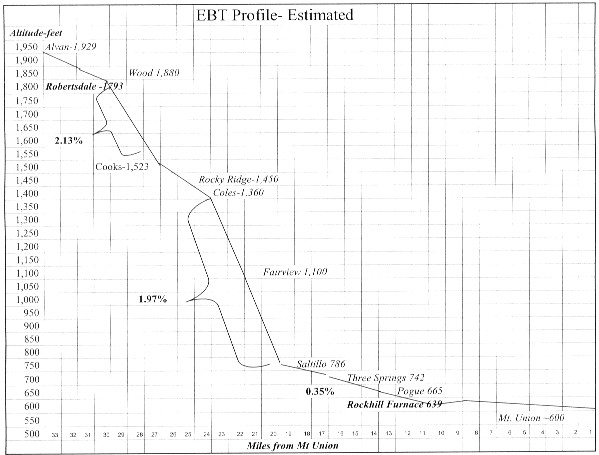
The route of the East Broad Top Railroad and Coal Company was largely a result on online industry which not coincidentially allowed it to remain narrow gauge to a very late end of common carrier days. The narrow gauge idea was a phase that quickly proved to be disasterous to any more-than-temporary railroad, mostly because of the difficulty interchanging traffic with other carriers. EBTRR was one of only a handful of successful common carrier narrow gauge railroads.
The EBTRR was built in conjunction with the Rockhill Iron & Coal Company (RIC) furnace at Rockhill PA, the furnace was placed centrally in the vicinity of coal and iron ore deposits and the railroad was created to haul these natural resources to the furnace. The location of Rockhill furnace was the determining factor for the EBTRR's route. Without the Rockhill Furnace, the eastern Broad Top field's coal would more likely have been hauled by further extentions of the pre-existing Huntingdon and Broad Top Mountain Railroad or by a new railroad that would have probably followed an easier route north down Smith Run valley to Mapleton on the Pennsylvania Railroad.
After the development of the Rockhill Furnace, excess coal could be shipped north to the PRR at Mt. Union. With the availability of coal energy, other industries including fire brick were developed at Mt. Union. These industries were crucial to the EBTRR because the Rockhill Furnace days were numbered. Like other central Pennsylvania iron producers, Rockhill Furnace fell victim to integrated steel mills. In fact, Rainey points out that the 1908 closing of the furnace probably saved the railroad as the railroad profitability had been subsidizing the furnace. The end result was a narrow gauge railroad that could compete into the 1950's.
Coal shipped out on the PRR had to be transloaded to standard gauge hoppers. To make the best of this situation, RIC and EBTRR added value to the coal at Mt. Union by cleaning and sorting as the coal was transloaded.
Even though the narrow gauge survived, narrow gauge was a extra cost and inconvenience. Many projects like the Rockhill Furnace never got off of the drawing board, so it is not fair to judge the developers' decision to go narrow gauge to save some money. Unlike the narrow gauge Peach Bottom system, the EBTRR's was not confined to a twisting creek canyon, so the EBTRR's curvature resembled a standard gauge. Poplar Hollow's 2.6% grade topped the average 2% climb from Orbisonia to Robertsdale, not a bad profile for a natural resource-based railroad. Rainey states that running more short trains of loaded coal to Mt. Union allowed more efficient use of the coal cleaning facility. It probably also allowed safer braking of loaded coal trains down the mountain. Likewise, taking empties back up the mountain involved doubling the hill whenever necessary rather than expensive helper operations.
The EBTRR was involved in its share of the multitudinous schemes to develop southern Pennsylvania railroutes. All of these schemes suffered from the erroneous thought that a shorter route (than's PRR's or B&O's) was needed. See
"Railroutes of the Alleghenies". Way back in the 1820's, Colonel Stephen Long stated that it is better to go longer rather than to climb mountains and any southern Pennsylvania route would certainly climb many mountains.
The never finished South Pennsylvania was the closest the EBTRR ever got to another outlet for its coal. One could speculate that if the South Penn had been finished, the RIC would have developed a separate standard gauge, perhaps using Roaring Run and Sideling Hill Creek. In any case, the value of these connections were ephemeral. Case in point is the Huntingdon and Broad Top Mountain RR that became a bridge route for the Georges Creek and Elk Garden fields to the south ( to avoid the C&Ps and B&O monopoly on Cumberland Coal). The connection did little to extend that road's life.
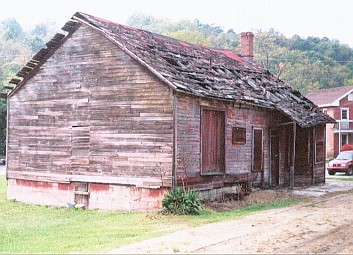
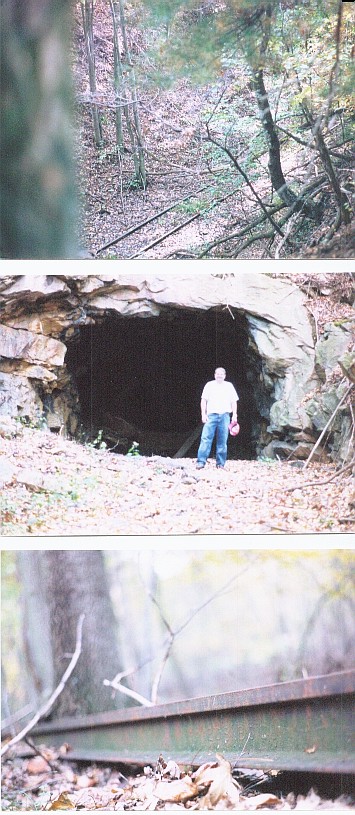
The middle photograph shows the author posing at the south (uphill) portal of Sideling Hill Tunnel. Elevation 1,210'. The ridgetop tunnel is in the middle of a hairpin curve designed to "switchback" the grade. Tunnels, cuts and fills, and hairpin/horseshoe curves are all engineering methods to make mountain climbing railroads feasible. As Rainey/Kyper's East Broad Top points out, it is incorrect to view the East Broad Top as quaint and antique. The well engineered route up the mountain is only one example of the many first class attributes of the EBT. Again according to this book, the surveyors ran many routes before bowing to the inevitable and including two expensive tunnels in the climb. More Sideling Hill
The north portals of both tunnels were equipped with electric doors to keep cold winds from freezing dripping water on the rail inside the tunnel.
The bottom photo shows the rail between Kimmell and Coles watertank. The rail is some of the heaviest on the EBTRR in this section because of flange wear on the curves. It is 85 pound Bethlehem Steel-Sparrows Point rolled in 1917. Note how the 48 year old tree in the middle of the track is lifting the rail from the ties.
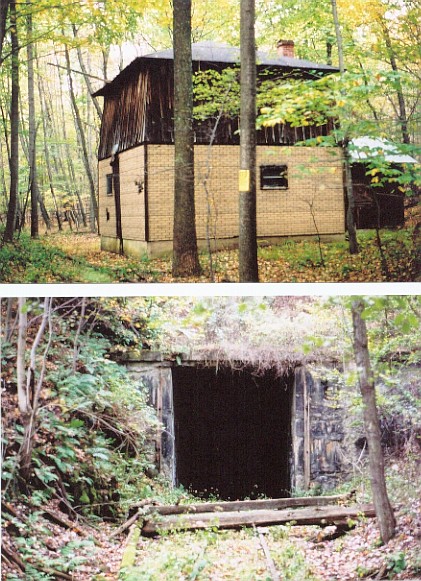
Bottom photo is the north portal of the Wray's Hill Tunnel. Rocky Ridge
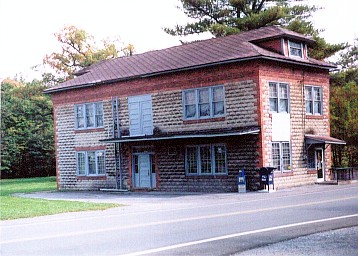

Sources
East Broad Top , Rainey and Kyper
Friend of the East Broad Top pamphlet
The East Broad Top Railroad Homepage- Christopher D. Coleman's unofficial BUT EXCELLENT SITE
2004 EBT Fall Spectacular
EBT Pages
| EBT Diesel | EBT Steam | EBT No.14 | Broad Top Geology |

| Rockville Bridge II | Rockville Bridge III | Enola | Cumberland Valley RR |
| Rockville Bridge I | Strasburg Rail Road | Strasburg Rail Road II | Millersburg Ferry |